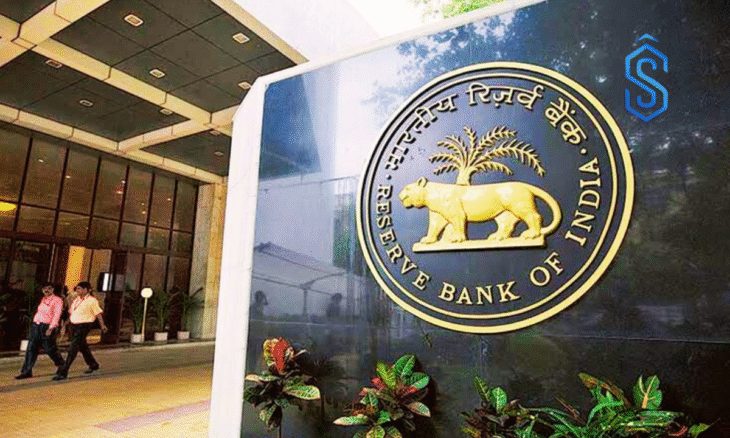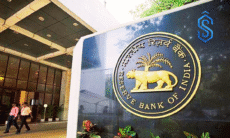Mumbai: In the backdrop of intensifying global trade tensions and slowing domestic demand, the Reserve Bank of India (RBI) has kept the repo rate unchanged at 5.5%, reflecting a cautious yet stabilizing monetary stance.
The decision by the Monetary Policy Committee (MPC) comes amid renewed uncertainty triggered by 25% import tariffs announced by the U.S. administration, which have begun to affect sentiment across sectors, including India’s residential real estate market.
According to the latest data released by ANAROCK Property Consultants, housing sales in India’s top seven cities dropped by 20% year-on-year, with only 96,285 units sold in Q2 2025, compared to 120,335 units in Q2 2024.
Also Read: CGTMSE Felicitates MLIs for MSME Lending Excellence
The decline highlights mounting buyer hesitancy, especially in the mid and affordable housing segments, which are highly sensitive to interest rate movements, economic headwinds, and policy shifts.
“The real estate sector is navigating an increasingly complex environment,” said Anuj Puri, Chairman, ANAROCK Group. “Homebuyers are facing rising prices, while developers are coping with higher construction costs and global supply chain volatility. The RBI’s decision to maintain rates provides short-term stability, but a rate cut could have offered much-needed momentum—especially for affordable housing, which is under pressure.”
Price Escalation Adds to Affordability Challenges
Data from ANAROCK shows that average residential property prices across the top seven Indian metros have increased by 39% over two years, rising from ₹6,470 per sq. ft. in Q2 2023 to ₹8,990 per sq. ft. in Q2 2025. This sharp escalation has further impacted affordability for first-time buyers and the middle-income segment.
The strain is compounded by the ongoing impact of U.S. tariffs, which has disproportionately affected MSMEs, a critical demand base for affordable housing. The interconnectedness of global trade policies and local economic activity has created an environment where housing affordability is increasingly at risk, unless balanced by incentives, infrastructure support, or monetary easing.
Also Read: Digital Lending: Poonawalla Fincorp Introduces Fin-Bot and AI Infrastructure Tools
Industry Voices Urge for Balance Between Stability and Stimulus
Pramod Kathuria, Founder and CEO of Easiloan, believes the RBI’s neutral stance on repo rate supports credit market stability while allowing previous rate cuts to filter into the system.
“The RBI’s decision to hold the repo rate at 5.5% with a neutral stance is an indication of a stable and accommodative monetary ecosystem. This stability ensures that the recent 100 bps rate cut can permeate deeper in the credit markets to the advantage of both lenders and borrowers. For the housing loan market, a stable interest rate scenario ensures risk-free choice for homebuyers and consistent growth for the housing market. We view this as a positive development that will further drive momentum in real estate and home finance at Easiloan,” he said.
Repo Rate Unchanged: What Lies Ahead
With the festive season approaching, real estate developers are expected to introduce limited-time offers, flexible payment plans, and value-added incentives to reignite buyer interest. Many are shifting focus to bundled offerings that combine lifestyle amenities and possession-linked plans, in a bid to counter affordability concerns and maintain sales momentum.
While the RBI’s repo rate move avoids exacerbating inflationary pressures, analysts note that a moderate rate cut—paired with structural policy reforms—could further stimulate housing demand and support India’s broader goal of improving urban homeownership.
“We are in a phase where homebuyers are driven more by long-term confidence than short-term fluctuations in repo rates,” Puri added. “With inflation moderating and economic fundamentals holding steady, it’s an opportune moment for balanced intervention that supports both growth and financial prudence.”
Govind Sankaranarayanan, Co-founder and COO, Ecofy, said: “The RBI’s decision to keep the repo rate at 5.5% is a balanced one, considering the emerging macroeconomic scenario and the need for recent rate cuts to percolate to the economy fully. For the green finance segment, this stability permits sustained credit flow growth while enabling the consumer and commercial space to plan investments with greater certainty. At Ecofy, a stable rate scenario will drive long-term adoption of sustainable and climate-resilient solutions across sectors.”
Praveen Sharma, CEO, REA India (Housing.com) stated, “”The RBI’s decision to maintain the repo rate at 5.5% reflects a balanced and prudent stance, coupled with positive guidance on inflation and GDP. This pause allows time for the full transmission of the 100 basis point rate cut implemented since February 2025.”
“As monetary easing continues to flow through the system, it is expected to bolster housing affordability – especially amid a sustained rise in average costs over the past 18 months – and support buyer sentiment during the upcoming festive season. Policy stability also reinforces confidence among homebuyers and developers alike, underpinning steady growth in the residential real estate sector amid ongoing urbanization and evolving consumer aspirations.”










